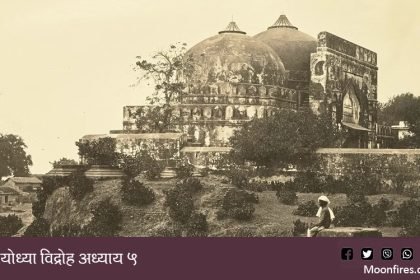Dnyaneshwari, also known as Bhavarth Dipika, is a commentary on the Bhagavad Gita composed by Sant Dnyaneshwar Maharaj at age sixteen (thirteen as per some sources). The Granth is the only one besides Srimad Bhagavad Gita whose Jayanti is celebrated.
Sant Dnyaneshwar Maharaj came from a family who held the ‘watan’ of Kulkarni in Apegaon, located on Godavari’s northern bank eight miles east of Paithan. Dnyaneshwar (1275 CE/Shaka 1197) was the second son of Vithalpant and Rukminibai. The couple had three other children; Nivrittinath (1273 CE/Shaka 1195), Sopan (1277 CE/Shaka 1199), and Muktabai (1279 CE/Shaka 1201). Vithalpant had taken Sanyas but returned home to Alandi on the instruction of his Guru. The children were born in Alandi.
Why is Dnyaneshwari Jayanti on Bhadrapad Vadya Shashti?
Bhadrapad Vadya Shashti is celebrated as Dnyaneshwari Jayanti by members of the Warkari Panth for whom Dnyaneshwari is the basic Granth. According to historical data, Sacchidnand Baba wrote down Dnyaneshwari composed by Sant Dnyaneshwar Maharaj to ensure that commoners understand the Gita. Several others made copies of the same. However, the subsequent written works had numerous errors.
Sant Eknath Maharaj took up the task of making the text error-free. The task was completed on Bhadrapad Vadya Shashti. Since then Warkaris observe the Krishna Paksha Shashti of the Hindu month Bhadrapad as Dnyaneshwari Jayanti annually.
The essence and significance of Dnyaneshwari
Dnyaneshwari or Bhavarth Dipika is a commentary on the Bhagavad Gita composed by Maharaj at age sixteen (thirteen as per some sources) in 1290 CE. The Granth brought out the deeper meaning and significance of the conversation between Bhagwan Krishna and Arjun. The Granth is important from both philosophical and poetic points of view.
The use of language, words, phrases, similies, and metaphors is simple and appropriate. The Granth explains complex philosophy in simple and understandable language. His thoughts reached the masses in a better manner because it is written in Marathi, the language of the masses.
Sant Dnyaneshwar Maharaj has explained Gita’s philosophy of Karmayog, Bhaktiyog, Gyaanyog, and Bhaktiyog/Bhaktimarg in simple terms. It is written in quatrain format meaning four-line verse of poetry. Dnyaneshwari explains several deep philosophical concepts in a simple and easily understandable manner. Sant Dnyaneshwar Maharaj has also included his philosophy and preaching of Yogmarg in the Granth.
Dnyaneshwari provides guidance to attain moksha by following the paths of Knowledge (Gyaan), Duty (Karm), and Devotion (Bhakti). Maharaj believed that all beings are a part of the Parabrahman (Supreme Being) and attaining Moksha through self-knowledge and enlightenment is the ultimate goal of every human being. The Grantha uses the dialogue form to explain the concepts with Sri Krishna being the narrator and Arjun the listener. In addition to explaining the Gita, Maharaj has included his ideology, views and thoughts.
This Grantha strengthened the tradition of religious literature. It has contributed immensely to the development of Marathi philosophical and spiritual literature. The Bhakti movement became widespread and gained prominence in large measure due to Dnyaneshwari. It also united the Hindu Samaj and got rid of caste and other differences.
Dnyaneshwari Jayanti is celebrated to not just commemorate the event but also a day to read and recall the Grantha. It is a day to honour Sant Dnyaneshwar Maharaj’s works and philosophy. Devotees draw philosophical and spiritual lessons through the readings of Dnyaneshwari. Special programmes are held at Alandi including bhajans, kirtans, discourses and recitation of Dnyaneshwari.
Article By – Maitri from https://hindupost.in













